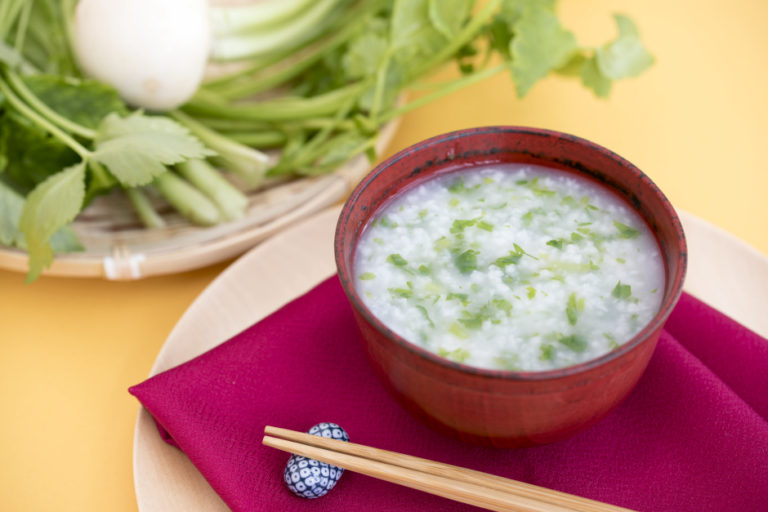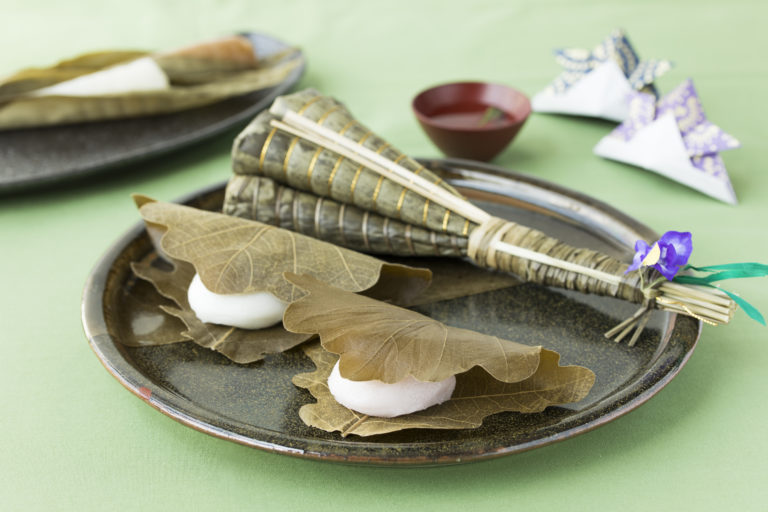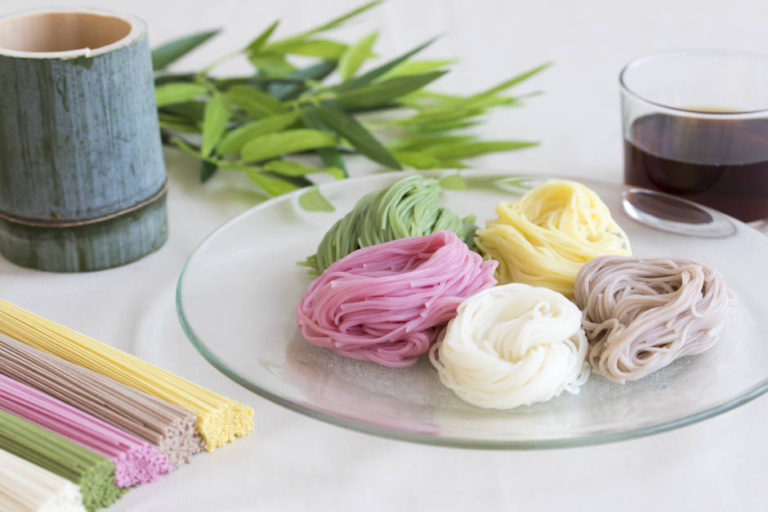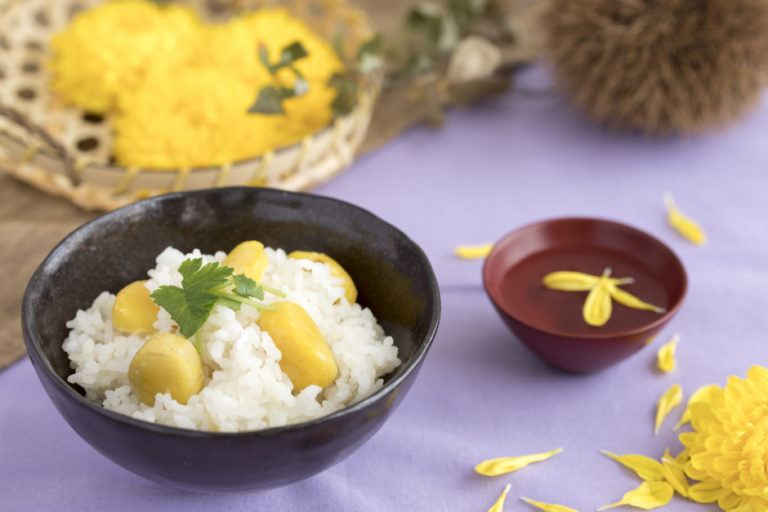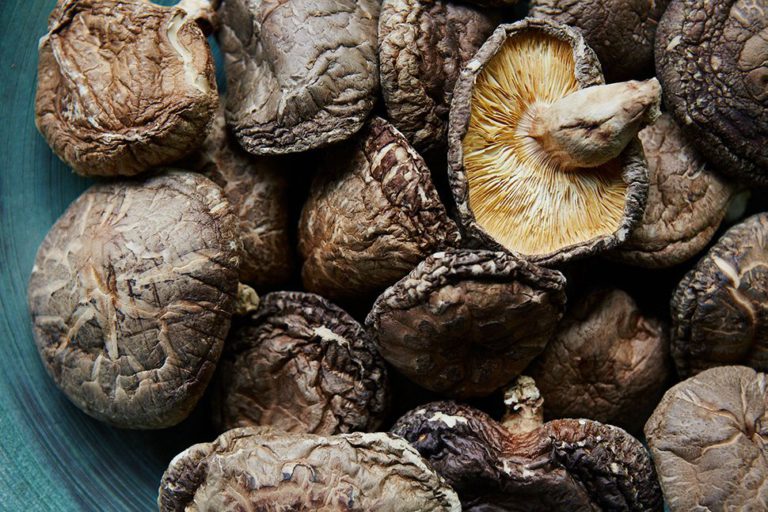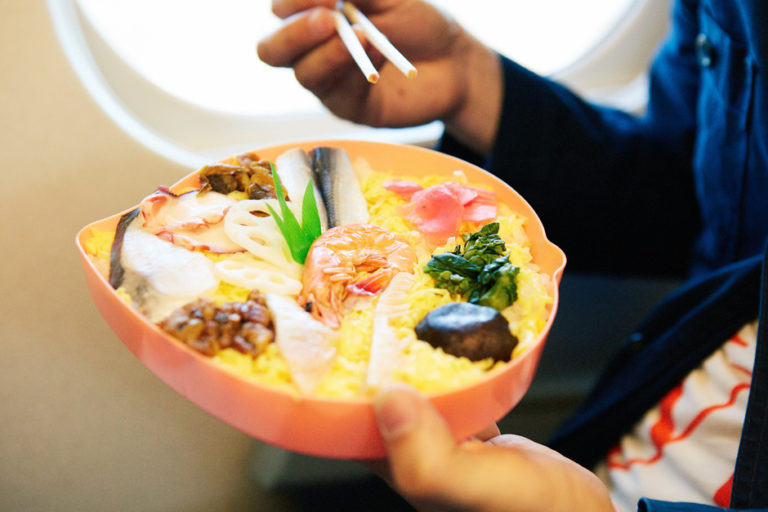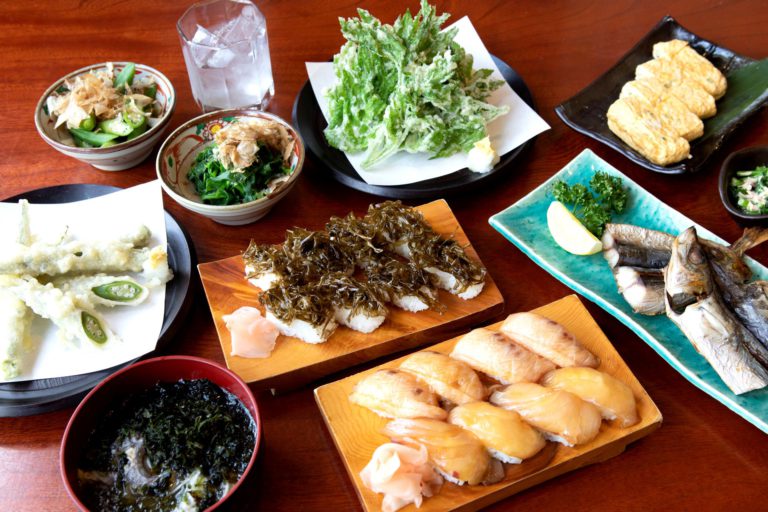Enjoying Go-sekku (Five Seasonal Festivals): March 3, Joshi no Sekku
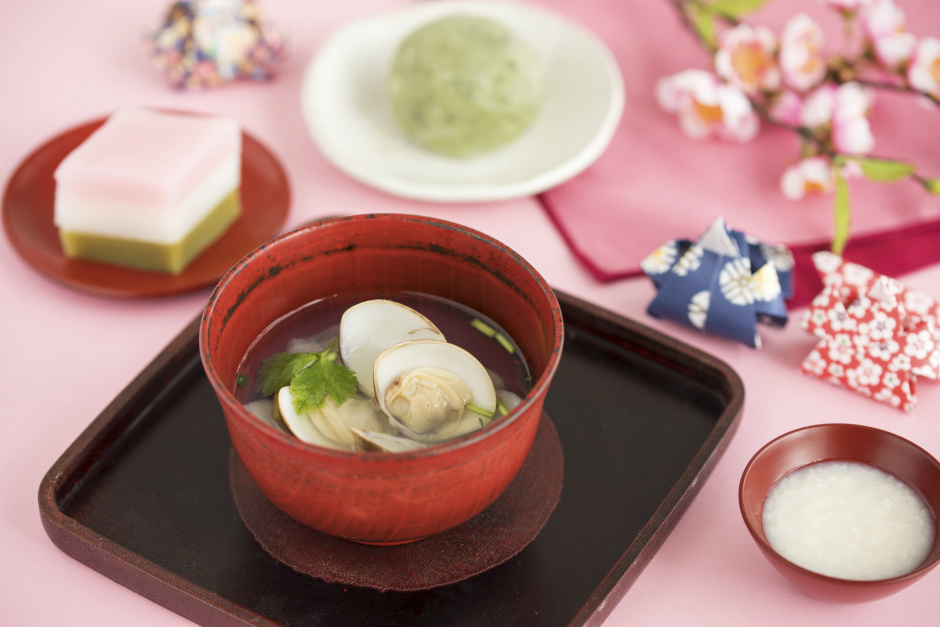
This festival boasts some of the most festive dishes of all the five festivals, such as hishimochi (red, white and green rice cakes in diamond shapes) and clam soup. We asked Hiroko Okubo of The Washoku Association of Japan about the origins of Joshi no Sekku and what these festival foods mean.
Japanese and Chinese customs to drive away evil spirits have fused together into a day to celebrate the growth of girls
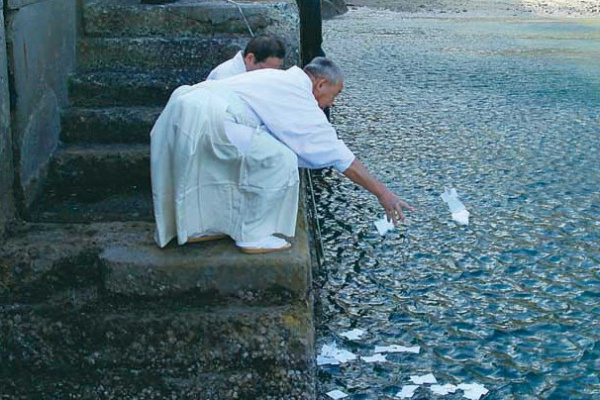
In China, Joshi no Sekku comes from a custom of ritual purification called Fukkei, which is carried out on the first Day of the Serpent (of the twelve signs of the Chinese Zodiac) in March. The day was set as March 3 in the third century, and has established itself as an event to ward away evil spirits.
Meanwhile, there was a Japanese custom to ward away evil spirits by setting dolls (in shape of humans) adrift. Paper and thin slices of wood were cut into human-like shapes, and people would stroke the body parts of the dolls in areas where they were unwell, before setting the dolls adrift. This custom took place in everyday life, without any set date. As Joshi no Sekku came over to Japan and started having presence as a ritualistic event in the Imperial Court, the custom of storing dolls for newborns originated. These dolls were set adrift when children were around three years old.
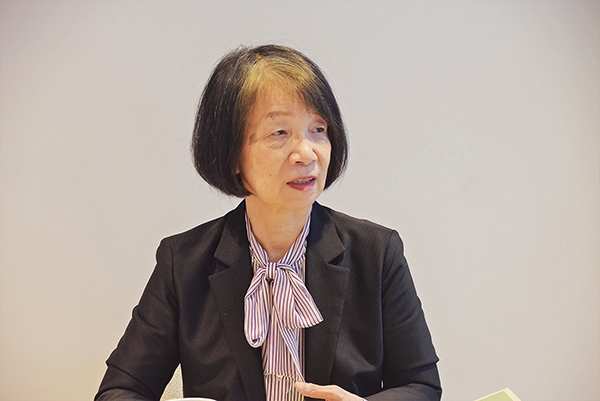
As years passed, these paper dolls were made with cloth, and eventually created as stuffed dolls for longer storage, before becoming the extravagant hina dolls we know today. It was said the more extravagant the dolls were, the more power the dolls had to drive evil spirits away. However, during the Edo period (1603–1868), people started believing that setting these gorgeous dolls adrift was a waste, so they started to put them away right after the festival ended, creating the current day custom.
“Putting dolls away after March 3 can be traced back to the custom of setting dolls adrift. Putting them away also has a meaning of having a woman marry—the Edo commoners have many interesting and witty ideas such as this,” says Okubo.

Okubo also educated us on the reason Joshi no Sekku became the festival for girls.
“The festival originally celebrated the growth of both boys and girls. The hina dolls originally feature a male and female couple, and the custom of warding off evil spirits was not only for girls. However, as Tango no Sekku became popular as a boys’ festival with warrior dolls and flying carp streamers—it is said that Joshi no Sekku spread among commoners as Hinamatsuri, a girl’s festival with hina dolls. Doll markets also sprung up in Edo around the 1800s. Jikkendana (the road from current-day Nihonbashi to Imagawabashi) was famous for its doll market. It is said that grand decorations such as five-tiered displays became popular since the Meiji period (1868–1912).”
Kusamochi and Shirozake—festival food for Joshi no Sekku
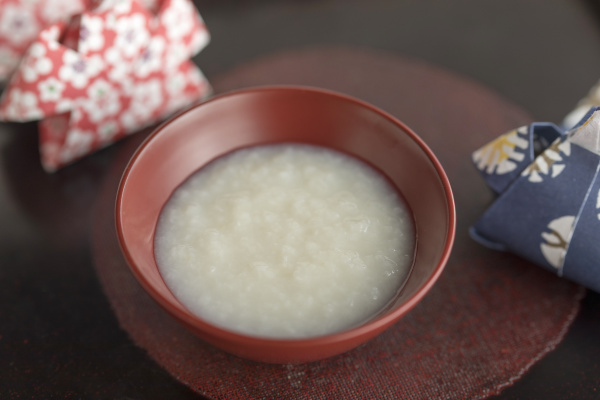
Each of the five festivals have their own signature flower, rice cake and sake. The peach flower represents Joshi no Sekku, as its name Momo no Sekku (Peach Festival) says. Due to this, it is said that peach wine featuring immersed peach flowers was taken at the festival. However, in the Edo period, the sake shop Toshimaya launched shirozake (white sake) during the Joshi no Sekku period. This turned out to be immensely popular, and established shirozake as the sake of choice for this festival.
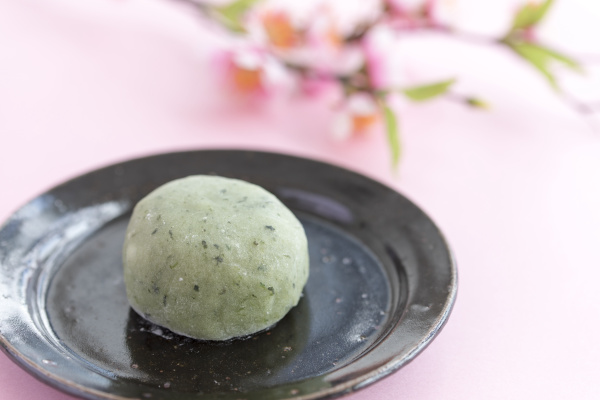
As for rice cakes, there are hishimochi and kusamochi (rice cakes mixed with mugwort).
“In the past, kusamochi was made with cottonweed. Cottonweed was also known as hahakogusa, which in Chinese characters is written as ‘Mother-Child Grass.’ Mugwort replaced this in the Edo period, but I believe that the idea of mothers and their children have not changed for this rice cake.”
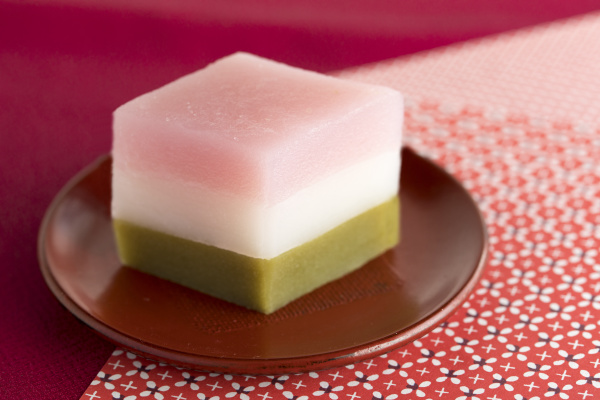
These days hishimochi often features rice cakes layered from the top: red, white and green. It is said that there were only white and green rice cakes during the Edo period, and red rice cakes started to appear only after the Meiji period started. The order in which the rice cakes were stacked were also different during the Edo period. The white color stands for the earth, and green for sprouting buds, which caused the layering order to be white on the bottom with green on top.
The colorful food culture and tradition for Joshi no Sekku
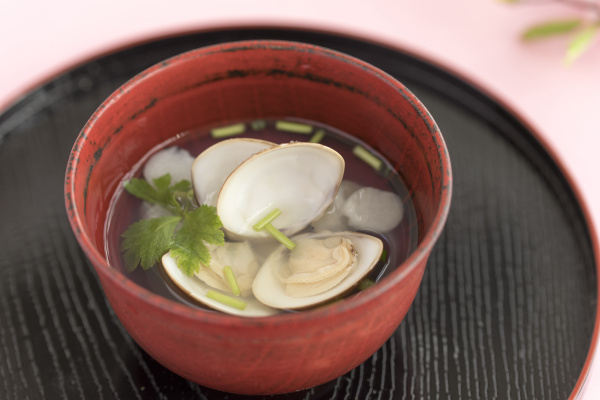
Many food traditions besides that of rice cakes and sake are still practiced for Joshi no Sekku. There are various foods such as chirashizushi (boxed sushi/sushi in a bowl with toppings sprinkled on top), hina-arare (red and white rice cake bits), and sakuramochi (rice cake with bean paste wrapped in pickled cherry blossom leaf) presented during the festival. According to Okubo, these dishes were probably made to make the festival fun for children.
One of those dishes is clam soup. As the festival is celebrated just during clam-digging season, clam dishes are Joshi no Sekku staples. It is said that clam dishes hold the wish to find the one and only partner for life, as each clam is a unique pair.
There are also various traditions that differ according to region. In the mountains of Gifu Prefecture or the Mikawa area in Aichi Prefecture, an event called Gandouchi is held. In this event, children go around their neighborhood asking to “see the family’s hina dolls” and receiving sweets. Ohinagayu (Hina Festival Porridge), which takes place in the Kawarasawa district of Ogano in Saitama Prefecture and right over the mountain path in the Otsuchi district of Ueno in Gunma Prefecture, has become an intangible folk cultural asset. Ohinagayu is an event in which children cook and eat porridge on the riverbanks to celebrate Joshi no Sekku. It is said to be a highly thought of event that retains the custom of children cooking together and playing, all done outdoors.
Joshi no Sekku signals the blooming of many flowers and the start of a new season. Although the event has changed over the years and the food differs by region, the wishes of parents to have their child grow in good health remain the same over the ages.

